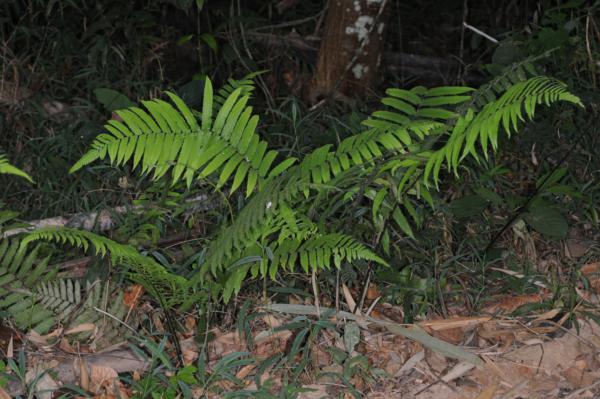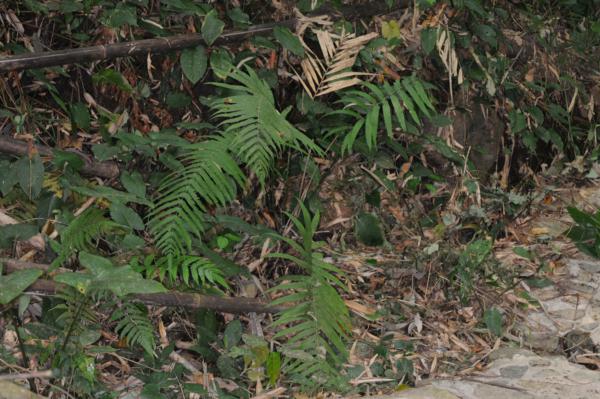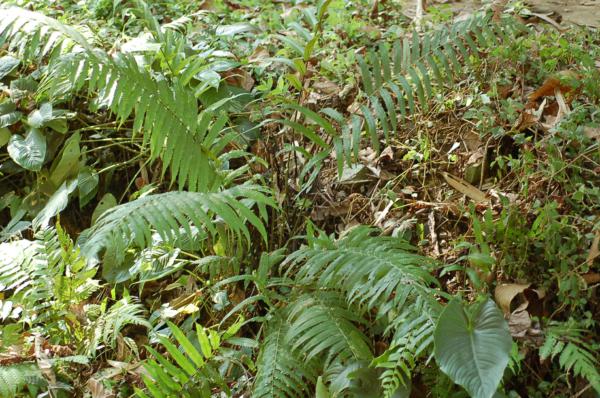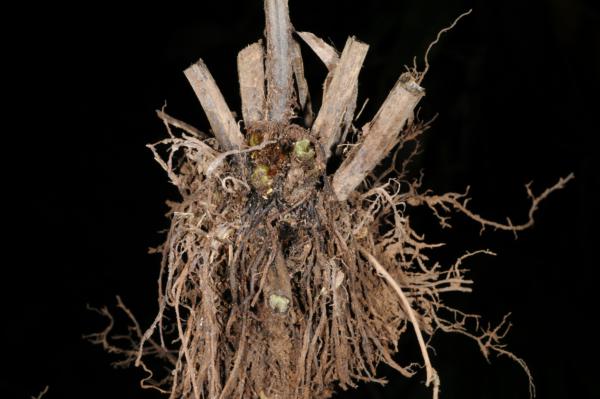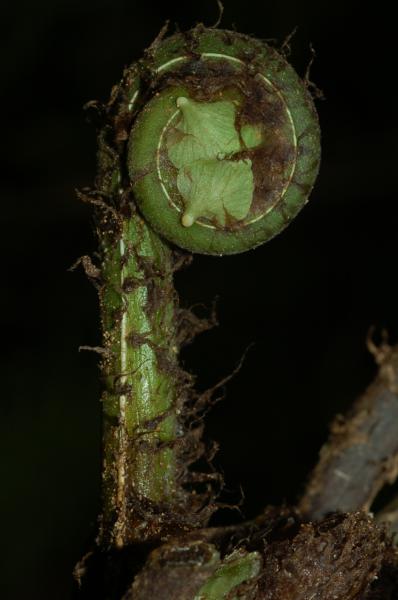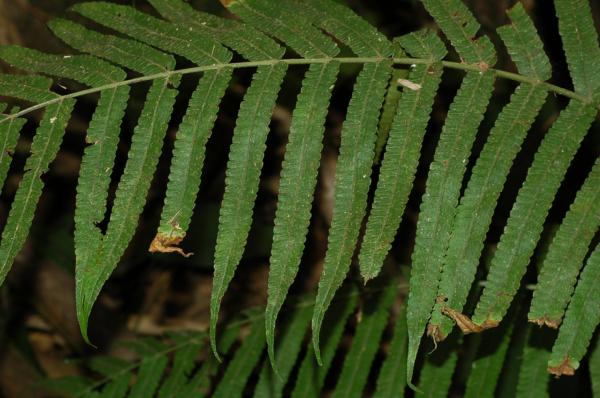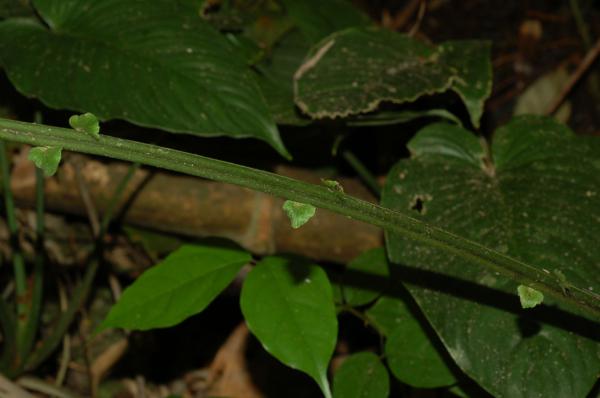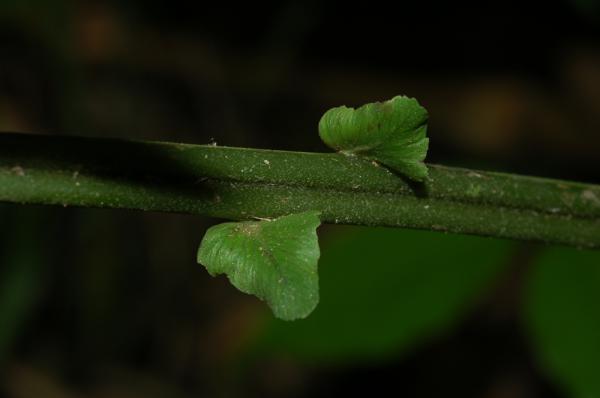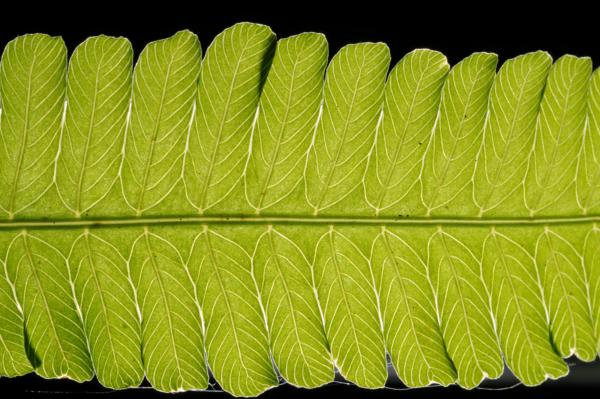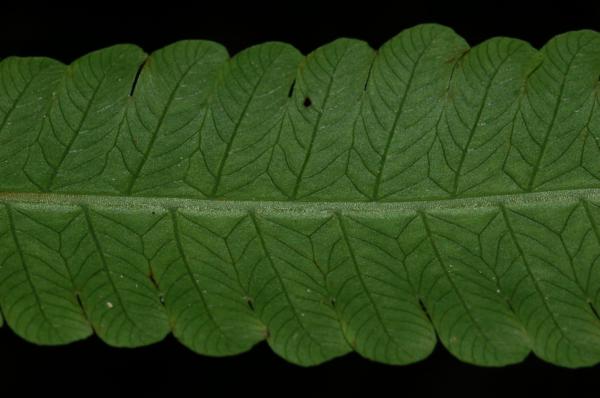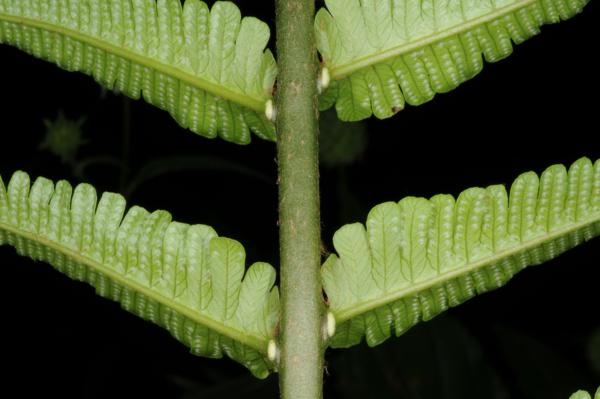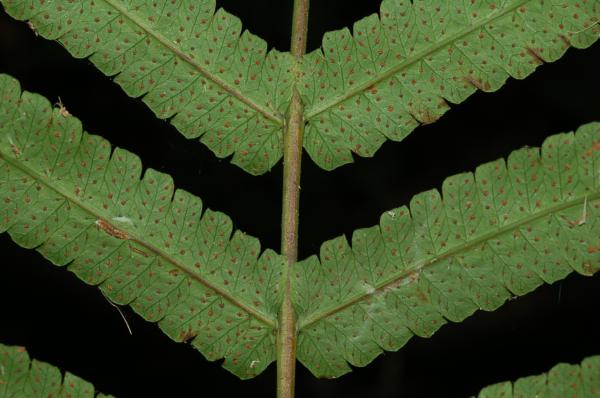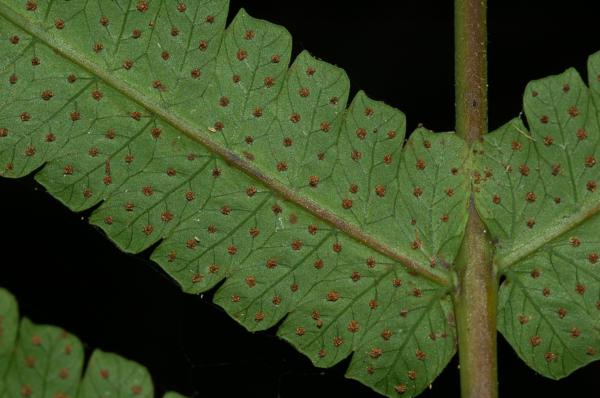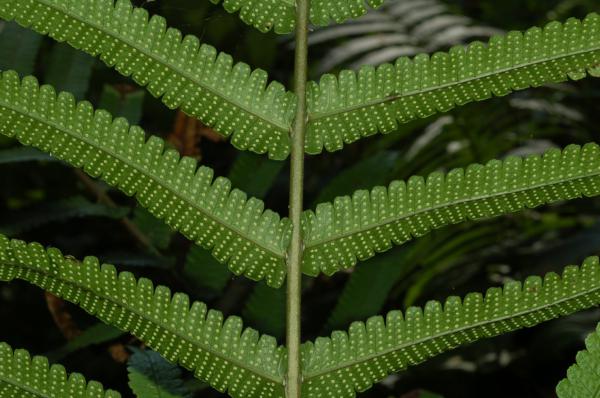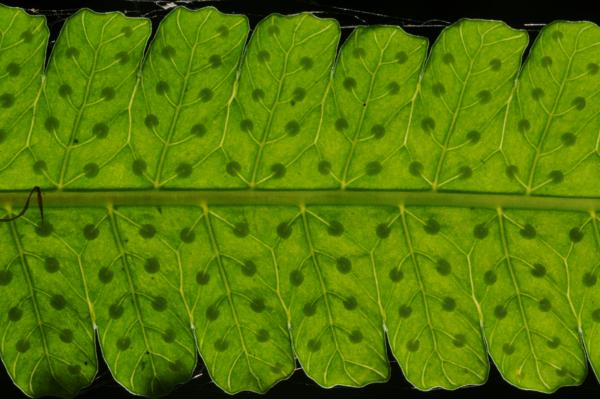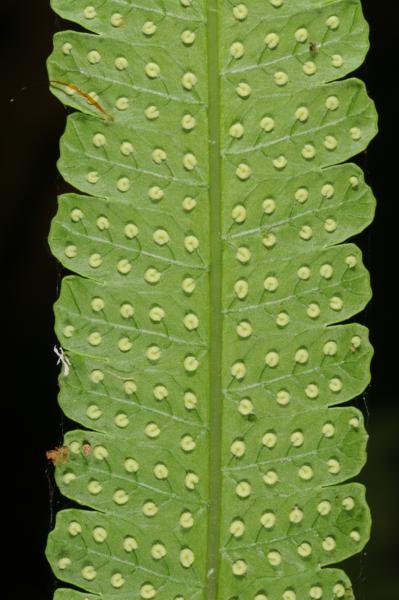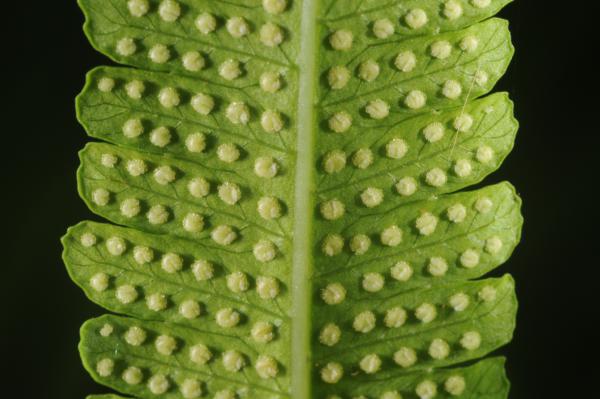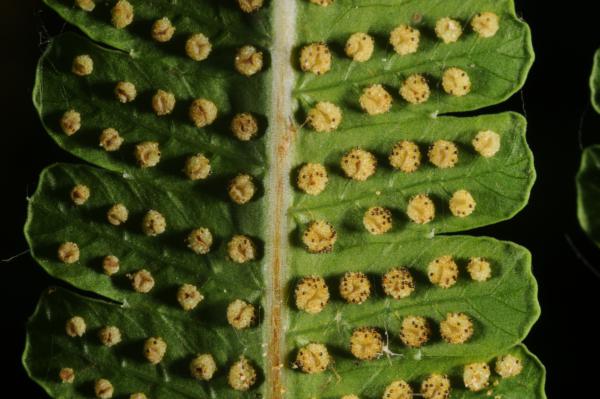
Cyclosorus truncatus (Poir.) Farw.
Family
Thelypteridaceae
Nomenclature
Cyclosorus truncatus (Poir.) Farw., Amer. Midl. Naturalist 12: 259. 1931; Ching, Bull. Fan Mem. Inst. BioL 8: 216. 1938; Tardieu & C.Chr., Notul. Syst. 7: 78. 1938; Tardieu & C.Chr., Fl. Indo-Chine 7(2): 394. 1941; Holttum, Rev. Fl. Malaya ed. 1, 2: 266, f. 152. 1955 [‘1954’]; Holttum, Dansk Bot. Ark. 20: 23. 1961. – Polypodium truncatum Poir. in Lam., Encycl. (Lamarck) 5: 534. 1804. – Nephrodium truncatum (Poir.) C.Presl, Tent. Pterid.: 81. 1836; Bedd., Handb. Ferns Brit. India: 280, f. 143. 1883. – Thelypteris truncata (Poir.) K.Iwats., Mem. Coll. Sci. Univ. Kyoto B. 31: 33. 1964; Tagawa & K.Iwats., SouthE. Asian Stud. 3(3): 80. 1965; Tagawa & K.Iwats., SouthE. Asian Stud. 5: 69. 1967; Tagawa & K.Iwats., Acta Phytotax. Geobot. 23: 54. 1968; Tagawa & K.Iwats., Fl. Thailand 3: 420. 1988. – Pneumatopteris truncata (Poir.) Holttum, Blumea 21: 314. 1973; Holttum, Fl. Males., Ser. II, Pterid. 1: 429, f. 11d–f. 1982 [‘1981’]; Boonkerd & Pollawatn, Pterid. Thailand: 166, 225. 2000. – Type: "Brezil", no collector cited (P).
Cyclosorus lepidopodus C.Chr. ex Tardieu & C.Chr., Notul. Syst. (Paris) 7: 73. 1938; Tardieu & C.Chr., Fl. Indo-Chine 7(2): 392. 1941.
Description
Rhizome short, erect; scales brown, thin, up to 15 by 4 mm, consisting of large cells, hairy. Stipes 51–113 cm long to full-sized pinnae (10–40 cm to the first reduced pinnae), pale, dark and scaly at base, pubescent, bearing reduced pinnae in upper part. Laminae oblong-lanceolate, 75–147 by 28–50 cm; by lower pinnae suddenly reduced to mere auricles, middle pinnae larger, straight, ascending, 15–32 by 2–3.5 cm, lobed to 1/3 way towards costa, gradually narrowing towards long-acuminate apex, broadly cuneate at sessile base, nearly parallel at margin; segments obtuse at apex, minutely dentate; papyraceous, green, verrucose on lower surface, glabrous; veins pinnate, a few pairs of basal veinlets anastomosing, free ones ending in teeth at margin of segments. Sori medial; indusia pale, glabrous, persistent .
Distribution in Thailand
NORTHERN: Mae Hong Son, Chiang Mai, Chiang Rai, Lamphun, Phrae, Tak, Phitsanulok; NORTH-EASTERN: Loei; SOUTH-WESTERN: Kanchanaburi, Phetchaburi; SOUTH-EASTERN: Chanthaburi, Trat; PENINSULAR: Surat Thani, Krabi, Nakhon Si Thammarat, Trang, Yala.
Distribution in Laos
Hua Phan.
Wider Distribution
Sri Lanka, S India, Himalaya to S China, Burma, Indochina, Ryukyu Is., Taiwan, W Malesia to Philippines. Sometimes all the local species are considered to be conspecific with this, and the area is then widely extended. Type was said to come from Brasil, but it is considered to be a specimen from Asia.
Ecology
On wet ground usually along streams in light or deep shade at low to medium altitudes up to 1500 m alt.
Proposed IUCN Conservation Assessment
Least Concern (LC). This species is widespread and not under any known threat.
Voucher specimens - Thailand
Middleton et al. 4744, Kanchanaburi, Khao Laem National Park (E); Middleton et al. 4689, Chanthaburi, Khlong Khrue Wai Wildlife Sanctuary (E); Middleton et al. 4644, Trat, Khlong Kaew National Park, Than Hin Dat Waterfall (E).
Habit
Habit
Habit
Rhizome
Crozier with prominent pale green aerophores
Pinnae
Reduced basal pinnae
Reduced basal pinnae
Venation
Venation
Aerophores at junctions of pinnae and rachis
Lower surface of rachis and pinnae
Lower surface of rachis and pinnae
Distribution of sori on pinnae
Position of sori on veins
Young sori
Young sori
Sori
Site hosted by the Royal Botanic Garden Edinburgh. Content managed by Stuart Lindsay, Gardens by the Bay, Singapore and David Middleton, Singapore Botanic Gardens. Last updated 24 January 2012
